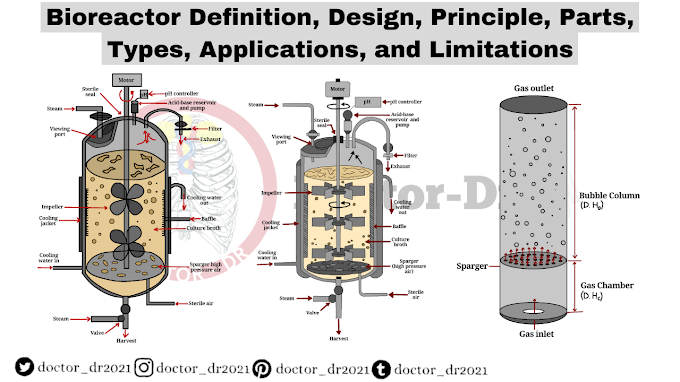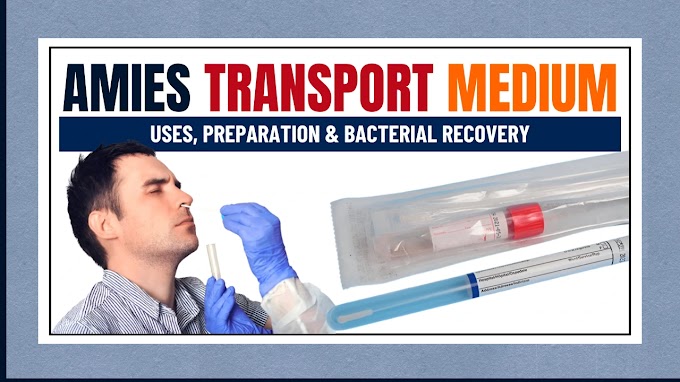Table of Contents
- Introduction of Ion Torrent Sequencing
- Principle of Ion Torrent Sequencing
- Steps of Ion Torrent Sequencing
- Advantages of Ion Torrent Sequencing
- Applications of Ion Torrent Sequencing
- Limitations of Ion Torrent Sequencing
- References
Introduction of Ion Torrent Sequencing
Ion Torrent Sequencing is a next-generation sequencing (NGS) method that leverages semiconductor technology to detect hydrogen ions (H⁺) released during DNA synthesis. This approach introduced the first commercially available semiconductor chip capable of converting chemical signals directly into digital data.
Unlike traditional sequencing methods that rely on optical detection, Ion Torrent eliminates the need for scanning, cameras, or light-based systems. Optical technologies, while accurate, are often costly and complex. In contrast, Ion Torrent uses direct detection of pH changes during nucleotide incorporation, making the process faster, more affordable, and highly scalable. These attributes have made Ion Torrent Sequencing a popular choice for applications in genomics, oncology, microbiology, and personalized medicine.
By measuring pH changes as DNA polymerase incorporates nucleotides, Ion Torrent technology bypasses the need for complex imaging or fluorescence detection. This streamlined approach accelerates the sequencing process and simplifies the overall workflow, offering a practical and efficient alternative for modern sequencing needs.
Principle of Ion Torrent Sequencing
Ion Torrent Sequencing operates on the principle of detecting hydrogen ions (H⁺) released during DNA synthesis. As DNA polymerase incorporates a nucleotide into the complementary strand, a proton is released, causing a local decrease in pH. This pH change is measured by an ion sensor on the semiconductor chip, which converts it into a voltage signal. This signal is then analyzed to determine the DNA sequence. Unlike other sequencing technologies like Illumina, which rely on optical detection of labeled nucleotides, Ion Torrent uses direct pH-based detection for a faster and simpler process.
The technology employs advanced semiconductor chips known as complementary metal-oxide semiconductors (CMOS), similar to those used in digital cameras and smartphones. These chips are equipped with ion-sensitive field-effect transistors (ISFETs), which detect the pH changes resulting from proton release during nucleotide incorporation. Each chip contains wells filled with DNA template-bound beads and deoxynucleotide triphosphates (dNTPs). Beneath these wells is a metal oxide sensing layer, enabling the chip to capture and transmit electronic data from pH fluctuations to the semiconductor for sequencing analysis.
This unique approach makes Ion Torrent Sequencing a cost-effective, scalable, and efficient solution for applications in genomics, oncology, microbiology, and personalized medicine. Its reliance on semiconductor technology ensures high-speed sequencing without the need for complex optical systems, making it an ideal choice for researchers and clinicians seeking streamlined sequencing solutions.
Steps of Ion Torrent Sequencing
1. DNA Extraction and Library Preparation
The process begins with creating a sequencing library containing DNA fragments ready for analysis.- DNA Fragmentation: The DNA is fragmented into smaller, manageable pieces using methods like sonication or enzymatic digestion.
- Adapter Ligation: Specific adapters are attached to both ends of the DNA fragments to facilitate their immobilization on beads for amplification.
- Size Selection: DNA fragments are selected based on size using gel electrophoresis. For Ion Torrent, shorter fragments work best, ensuring uniformity for efficient sequencing.
- Library Quality Check: The prepared library is quantified and assessed for quality to guarantee accurate sequencing.
2. Amplification
The DNA library is amplified using emulsion PCR (emPCR) to generate clonally amplified DNA templates.- Bead Binding: DNA fragments are attached to tiny beads known as Ion Sphere Particles (ISPs), with each bead holding a single DNA fragment.
- Emulsion PCR: The beads are emulsified in oil, forming water-in-oil microreactors where the DNA fragments are amplified.
- Enrichment: Beads with successfully amplified DNA are enriched through centrifugation, ensuring only these proceed to the sequencing stage.
3. Sequencing
The sequencing process occurs on a semiconductor chip.- Bead Loading: Amplified beads are loaded into microwells on the chip, with one bead per well.
- Nucleotide Flow: Nucleotides are sequentially introduced across the chip. If a nucleotide complements the DNA template, it is incorporated, releasing hydrogen ions that cause a pH change.
- Signal Detection: The chip’s ion sensor detects pH changes as electrical signals, which are used to identify the nucleotide sequence. If no match occurs, no signal is detected.
4. Data analysis
Once sequencing is complete, the data undergo processing and analysis.- Signal Processing: Data is transferred to a server, where base-calling algorithms convert electrical signals into nucleotide sequences.
- Data Visualization and Download: Sequencing results are accessible via a web interface and downloadable in formats compatible with next-generation sequencing analysis tools.
- Sequence Assembly and Annotation: Software tools align sequences to reference genomes, identify variants, and annotate the data for meaningful insights.
This efficient and scalable workflow makes Ion Torrent Sequencing an ideal choice for applications in genomics, oncology, microbiology, and personalized medicine. Its fast turnaround time and cost-effectiveness further enhance its utility in cutting-edge research and clinical applications.
Advantages of Ion Torrent Sequencing
Ion Torrent Sequencing offers several distinct advantages, making it a popular choice for various research and clinical applications. Here's why this technology stands out:
1. Fast Turnaround Time
- Ion Torrent Sequencing is significantly faster than many other sequencing technologies. This makes it ideal for time-sensitive applications such as clinical diagnostics and urgent research projects, where speed is critical.
2. Optics-Free Detection
- Unlike traditional sequencing methods that rely on optical signals, Ion Torrent uses pH-based detection to monitor nucleotide incorporation. This eliminates the need for cameras, light sources, or scanners, streamlining the process and reducing sequencing time.
3. Cost-Effectiveness
- Ion Torrent technology offers a lower cost per sequencing run, making it an accessible option for smaller laboratories and institutions with budget constraints.
4. Simplified Workflow
- The workflow for Ion Torrent Sequencing is straightforward, involving fewer complex steps. This simplicity enhances ease of use, reduces errors, and improves overall efficiency.
5. Versatility in Applications
Ion Torrent Sequencing supports a wide array of applications, including:
- RNA Sequencing for transcriptomics.
- Targeted DNA Sequencing for specific genomic regions.
- Whole-Exome Sequencing for analyzing coding regions of the genome.
These benefits make Ion Torrent Sequencing a preferred solution for researchers and clinicians aiming to achieve reliable, fast, and cost-effective results across diverse fields such as genomics, oncology, and personalized medicine.
Applications of Ion Torrent Sequencing
Ion Torrent Sequencing is a versatile technology with broad applications across research, diagnostics, and personalized medicine. Here's how it is transforming various fields:
1. Cancer Research and Oncology
Ion Torrent sequencing plays a pivotal role in cancer research by enabling the study of key biomarkers for drug development and understanding immune system responses to cancer. It is widely used for targeted sequencing to analyze specific mutations and pathways relevant to oncology research.
2. Microbial Research and Pathogen Studies
This technology aids in exploring microbial diversity, tracking pathogen outbreaks, and detecting antibiotic-resistant mutations. Applications include:
- De Novo Microbial Sequencing: For identifying novel microbial genomes.
- Bacterial Typing: To pinpoint bacterial strains.
- Viral Typing: For classifying viruses.
- Metagenomics: To analyze complex microbial communities in various environments.
3. Complex Disease Studies
Ion Torrent is instrumental in researching autoimmune disorders, neurodegenerative diseases, and other complex conditions. It supports:
- Gene Expression Profiling: Understanding gene activity patterns.
- Targeted DNA and RNA Sequencing: Focusing on disease-specific genomic regions.
4. Agricultural Genomics
In plant and animal genotyping, Ion Torrent helps identify traits to enhance agricultural productivity. This includes:
- Improving crop varieties and livestock.
- Addressing food security through innovative breeding strategies.
5. Forensic DNA Analysis
Ion Torrent sequencing is valuable in forensic science for DNA profiling. It enables accurate identification of individuals from DNA samples, aiding in crime investigations and genetic analysis.
6. Clinical Diagnostics and Personalized Medicine
The technology is widely used for detecting genetic mutations linked to diseases. It also supports personalized medicine by tailoring treatments to a patient’s unique genetic profile, offering targeted and effective therapeutic options.
7. Targeted DNA Sequencing
- Ion Torrent is ideal for sequencing specific genomic regions of interest, providing insights into areas critical for research or diagnostics.
- With its versatility and precision, Ion Torrent Sequencing continues to drive advancements in genomics, healthcare, and agricultural innovation, making it a powerful tool for modern science.
Limitations of Ion Torrent Sequencing
- Struggles to accurately sequence homopolymeric regions with repeating nucleotides. When multiple nucleotides are incorporated simultaneously, the release of excess H+ ions generates stronger signals, leading to base-calling errors.
- Produces shorter read lengths compared to methods like Sanger sequencing, limiting its application for analyses requiring longer, continuous DNA sequences.
- The emulsion PCR (emPCR) process used for DNA amplification can introduce errors and biases, resulting in the loss or underrepresentation of certain DNA sequences.
- Short read lengths, lower throughput, and difficulties in assembling complex genomes make it less suitable for large-scale genome sequencing projects.
References
- EMBL-EBI. (n.d.). Ion Torrent: Proton / PGM sequencing | Functional genomics II. Retrieved from https://www.ebi.ac.uk
- Ion Torrent | Thermo Fisher Scientific – NP. (n.d.). Retrieved from https://www.thermofisher.com
- Ion Torrent™ Next-Generation Sequencing Technology. (n.d.). Retrieved from https://www.thermofisher.com
- Pereira, R., Oliveira, J., & Sousa, M. (2020). Bioinformatics and computational tools for Next-Generation Sequencing analysis in clinical genetics. Journal of Clinical Medicine, 9(1), 132. https://doi.org/10.3390/jcm9010132
- Porterfield, A. (2020, April 2). How the Ion Torrent Sequencer works. Retrieved from https://bitesizebio.com
- Saadat, A. (2020, August 30). Ion Torrent Sequencing. Retrieved from https://biobinge.pubpub.org
- Slatko, B. E., Gardner, A. F., & Ausubel, F. M. (2018). Overview of Next‐Generation Sequencing Technologies. Current Protocols in Molecular Biology, 122(1). https://doi.org/10.1002/cpmb.59









